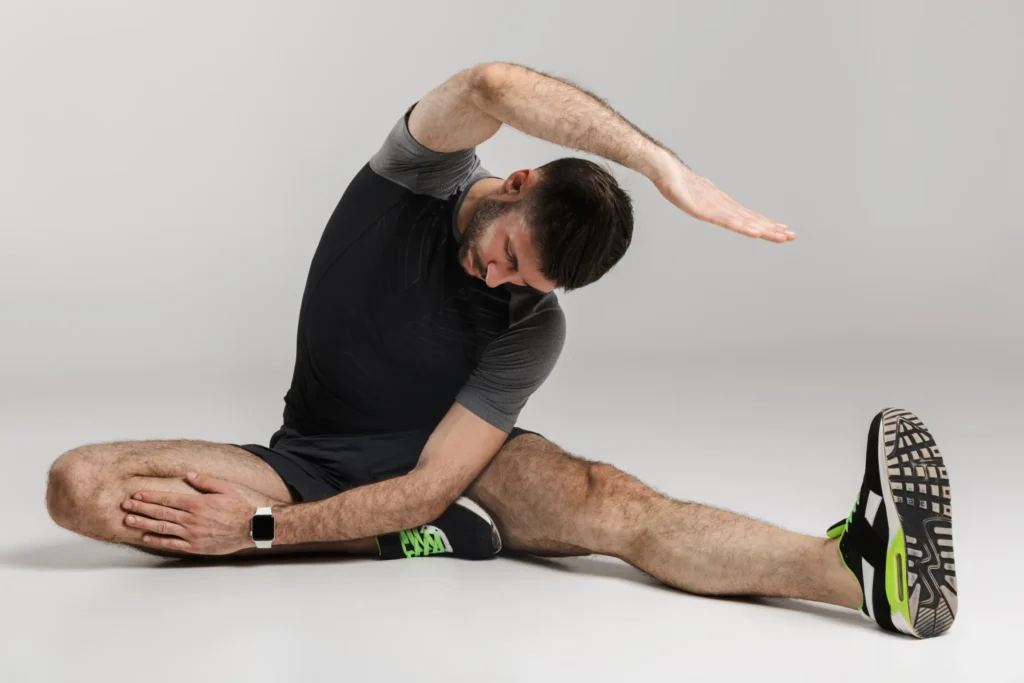As trainers , we often meet various types of clients who suffer from health problems, whether it is knees, spine or shoulders. The first thing that comes to mind for these pains is stretching or stretching. another form of stretching, such as yoga. It is a fairly popular method among regular exercisers who want to get rid of pain (especially in the back). In this blog, however, we will look at a few examples of why stretched and “relaxed” muscles are not always the optimal solution for eliminating pain.
By constantly stretching the muscles, the muscles lose strength and tension. Proper and sufficient tension in the muscles is in terms of posture and mechanics of movement extremely important and can prevent unpleasant injuries. Our body needs to maintain its optimal length and tension in the muscles (or muscle twins) to move without throes. This phenomenon is called a “length-tension relationship”. However, if there is one muscle group overstretched, opposing muscles respectively. The antagonists will be probably too stiff. A frequently seen phenomenon can be, for example, the shoulders sagging forward due to stretched interscapular muscles (sitting at the computer, frequent staring at the mobile phone) and subsequently downloaded pectoral muscles. If the muscles on both sides of the body had the ideal tension and length, your shoulders would be in a neutral position and you probably wouldn’t have to to deal with shoulder or neck pain.
The first example is the “unintentional” stretching of important Muscles. If the muscle is too relaxed and cannot optimally “turn on” when movement that he is primarily supposed to perform, the other muscles will probably do it for him, which should ideally only assist him with movement. And that’s when a problem arises and injuries occur. The most common An example is the gluteal muscles, which are from prolonged sitting (e.g. sedentary professions) are relaxed, so they are not able to contract ideally (download and make the movement) and then have to work for them when moving thigh muscles (hamstrings). This, in turn, leads to overloading of the hamstrings, stretching/tearing them, or even frequent pain in the lumbar spine. In this case, ideal to find dysfunction as soon as possible and focus in particular on strengthening the gluteal and deep abdominal muscles and trying to limit sedentary way of life, at least to some extent. Strengthening will restore lost tension to the muscles and they will be able to engage during the day while holding their body in neutral respectively. when jogging or other more complex movements.
Another example is the “intentional” stretching of muscles, for example stretching or with the help of yoga. Personally, I have nothing against yoga, it has a lot of benefits, whether physical or mental, but every exercise or exercise. an activity that has long been We perform requires a certain level of compensation. Several elements, e.g. in yoga requires staying in the extreme ranges for several tens of seconds. Personally, I am inclined to think that extreme ranges of motion and hypermobility in the joints are more dangerous than beneficial, especially As long as you can’t control them. Also important is the fact that most people have these It simply does not need ranges to such a large extent. Extreme ranges in the joints and stretching the muscles in the extreme positions subsequently lead to to muscle instability in the body and pain. We can continue with the examples hind thigh muscles (hamstrings). Hamstrings are used in most complex exercises stretched probably the most during stretching or yoga, and by losing optimal tension, at the same time they lose the ability to hold the pelvis in neutral respectively. in a gentle “squat” (as well as the buttocks muscles). Thus, the pelvis is tilted forward, which subsequently continues with hyperlordosis of the lumbar spine (back pain) followed by hyperkyphosis of the thoracic spine (dropped shoulders forward – shoulder and neck pain). In this case, too, it is high Recommended proper strength training to help keep the body pain-free.
Every action provokes a reaction. This rule applies in particular about a body that is connected from head to toe and it is quite common that A sprained ankle can result in e.g. misalignment of the jaw, the so-called crossbite. Thereby that we will constantly stretch our muscles will in the vast majority of cases do more harm how we help. By doing static stretching, we probably won’t help ourselves either in the warm-up before training or in the prevention of injuries. Of course, they are individual cases where the given methods will help (very shortened muscles and highly limited ranges of motion). However, as far as most people are concerned, the most ideal The way to prevent pain is to properly set up strength training in full range of motion, under the supervision of an experienced trainer.


